Planting Technology Lists
-
Prevention and Control of Diseases and insect pests of Mulberry after Summer cutting
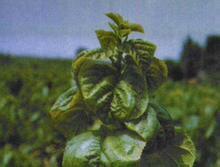
Mulberry dwarf disease is a disease of mulberry trees. It can be divided into three types: yellowing, atrophy and mosaic. First, morbid ① yellowing atrophy: the first onset starts from the top of the branches, and the leaves are small and yellow and curl to the back. With the aggravation of the disease, the lower lobe is thin and small, yellowed and curled with focal spots. The branches are dense and the lateral branches are clustered in the shape of sweeping.
2018-09-10 -
Pest control and fertilization of mulberry in spring
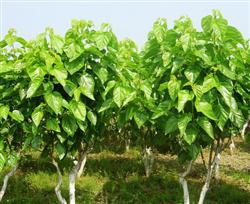
First, we should strengthen the prevention and control of insect pests. The harm to mulberry trees in spring is "mulberry inchworm" and "mulberry caterpillar", which mainly feed on mulberry buds and tender leaves. The control method can be sprayed with 1000-fold solution of dichlorvos in the mulberry bud stage, and mainly captured artificially after the mulberry leaves grow up. Second, timely fertilization. Timely application of spring fertilizer can promote.
2018-09-10 -
Does planting eucalyptus damage the land?
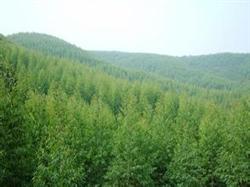
1. Suitable environment Eucalyptus prefers warm climate, but is not resistant to hot and humid, and overheated climate grows poorly. Yunnan is mainly distributed in the area of 1200-2400 meters above sea level. It can only withstand a low temperature of about-7 ℃ for a short time. If it is menstruated at-5 ℃ for 2-3 days, it will produce varying degrees of freezing injury, light twigs.
2018-09-10 -
Winter breeding Pleurotus ostreatus to prevent deformity
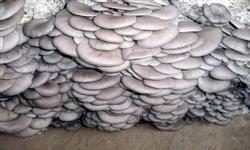
The cultivation area of Pleurotus ostreatus is constantly expanding, the cultivation techniques are constantly renovated and improved, and the disastrous weather disturbs the cultivation of Pleurotus ostreatus from time to time. The main disastrous weather in winter and spring are: snowfall (including blizzard, snowstorm), cold spell, strong wind and cooling weather (including blowing sand and floating dust), continuous.
2018-09-10 -
Several keys to high and stable yield of cultivated volvariella volvacea
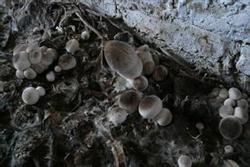
Straw mushroom likes the environment of high temperature and high humidity. After the culture material enters the mushroom, it is necessary to strictly control its water content, put an end to the use of over-age bacteria, and keep the temperature of the mushroom room at about 30 ℃. Second, because straw mushroom is an aerobic fungus, need a lot of water, too much ventilation is easy to die of lack of water, lack of ventilation is easy to cause too much carbon dioxide and hypoxia.
2018-09-10 -
Common pesticides for prevention and control of chrysanthemum diseases and insect pests
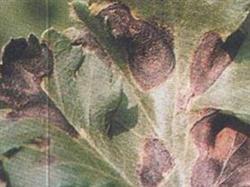
First, the main symptoms: occur in the leaves, and mostly in the lower leaves. The initial stage of the disease spot is faded green macula; after expansion, the disease spot is round to irregular, the edge is dark brown, inside grayish brown; in the later stage, the disease spot is dry and black granules appear. Second, the cause of the disease: fungal diseases. Germs live in the soil.
2018-09-10 -
Occurrence and control of chrysanthemum powdery mildew
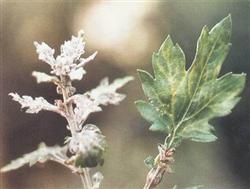
Powdery mildew of chrysanthemum is one of the common diseases in flowers, which is distributed in the south and north of China. Powdery mildew of chrysanthemum causes poor plant growth, withered leaves and even does not blossom, seriously affecting the effect of greening and beautification and flower production, but also harming melon leaf chrysanthemum, calendula, echinacea, African chrysanthemum, Persian chrysanthemum, emerald chrysanthemum, dahlia.
2018-09-10 -
Cultivation and Management of Yellow Chrysanthemum
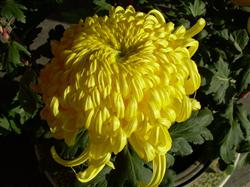
Yellow chrysanthemum is called chrysanthemum cauliflower. The leaf of chrysanthemum cauliflower plant is round, the petiole is shortened and many wheels form a chrysanthemum shape, the petiole is green, the leaf is glossy, the leaf edge is entire, the weight of single plant can reach 150 grams, the quality is good, and the flavor is better after frost. Chrysanthemum cauliflower has the effect of clearing heat, dispelling wind, detoxification and eyesight. Many friends ask about it.
2018-09-10 -
Control of pseudotail brown spot of chrysanthemum
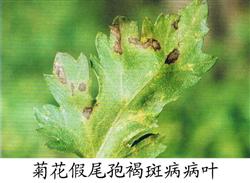
The main results are as follows: 1. the symptom spot is born on both sides of the leaf, nearly round, the edge is not obvious at the initial stage, and then sometimes produces a dark brown thin coil, often along the edge of the leaf. The foliar disease spot is light yellow at the beginning, brown to dark brown in the later stage, and grayish brown on the back of the leaf. 2, the disease is caused by fungi, pathogen.
2018-09-10 -
Removing Mulberry Flowers and Mulberry fruits to Control Mulberry shoot Breaking Disease
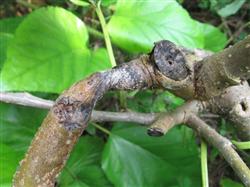
Mulberry shoot-breaking disease, also known as branch-breaking disease, white mulberry disease. Shoot-breaking disease is a widely prevalent mulberry disease in recent years. It is a disease caused by the pathogen of Sclerotinia sclerotiorum to infect new shoots through the stalk of morula, causing the base of new shoots to rot and break. The disease is characterized by the disease of mulberry trees with long female mulberry flowers or androgynous flowers.
2018-09-10
